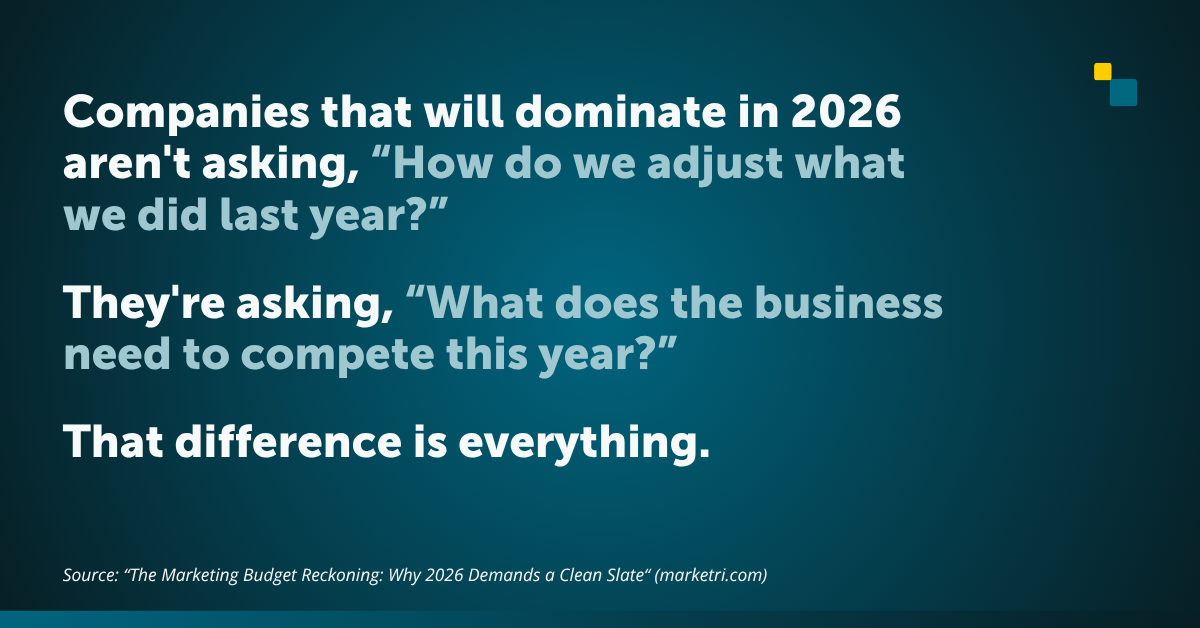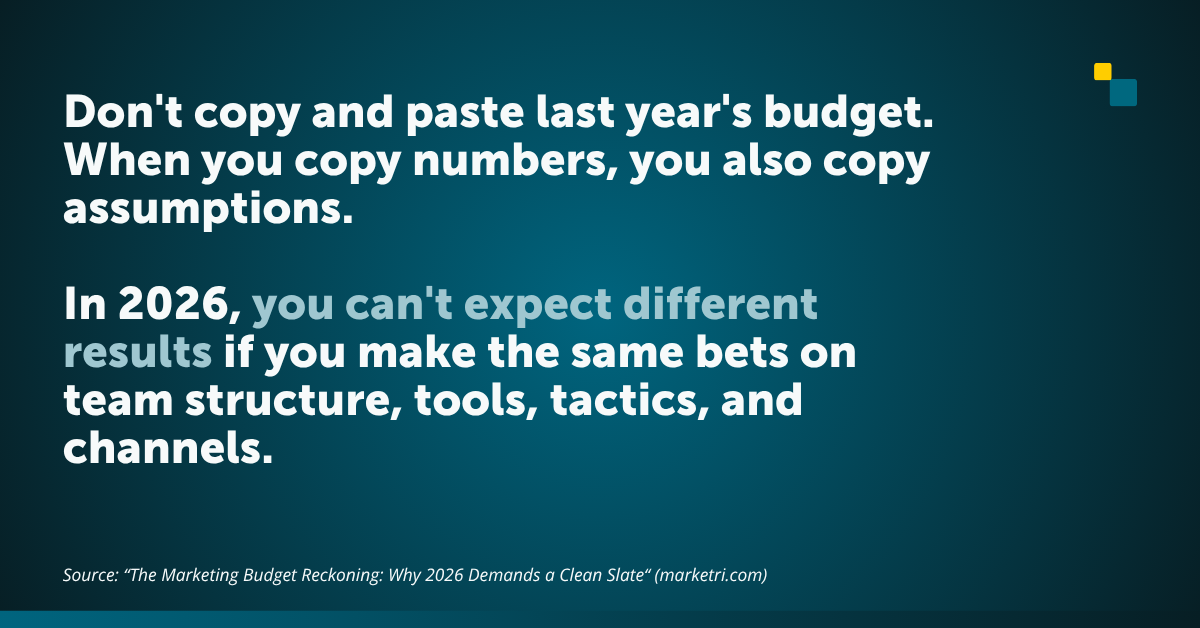Marketing Budget Strategies for 2026: Efficient Tactics & Planning
2026 is shaping up to be a pivotal year for marketing budgets, driven by the rapid adoption of AI in marketing strategies. According to recent findings, AI adoption has increased significantly, with 63% of marketers planning to integrate AI into their strategies by 2025. As a result, a mere increase in marketing spend will not guarantee success. Instead, a complete overhaul of the marketing budget approach is necessary.

Image courtesy of Marketri
The Rolling Forward Trap
Many organizations treat their marketing budgets as auto-renewal subscriptions, perpetuating outdated strategies. The old playbook is no longer sufficient; marketing leaders must assess how consumer behaviors have shifted, particularly with the rise of AI-powered tools that enhance search and research capabilities.
Three Investment Priorities
Tech Spend
Investing in technology that enhances marketing capabilities is crucial. Companies that utilize AI tools often see a 71% increase in revenue. However, it's essential to focus on implementation and training, not just acquisition.
Upskilling
The marketing workforce must be trained to utilize AI tools effectively. Investments in AI education are necessary, whether through workshops or pilot programs.
Workforce Structure
Modern marketing strategies require innovative workforce structures. The traditional model of increasing headcount is being replaced by flexible support systems. Utilizing a fractional marketing team can provide expertise without the overhead of full-time hires.
The Flexibility Imperative
The rapid pace of change in 2026 necessitates budget flexibility. Companies should avoid long-term commitments to technology and be prepared to pivot as new tools emerge. Firms with robust AI capabilities are already leveraging agentic AI systems to streamline workflows.

Image courtesy of Marketri
Beyond the Numbers
A marketing budget must reflect a company's strategic intent. It's not merely a financial document; it indicates growth opportunities and competitive positioning. Companies should start with a blank template and justify every budget line item to ensure alignment with current market needs.
Tactics for Your 2026 Marketing Budget
Micro-Influencer Partnerships
Leveraging partnerships with micro-influencers can yield higher engagement rates than traditional influencer marketing. Micro-influencers inspire up to 60% more engagement and are often more cost-effective. Shifting a portion of your influencer budget towards multiple micro-partnerships could significantly enhance your marketing ROI.
Competitive Intelligence with Perplexity AI
Utilizing tools like Perplexity AI can transform competitive research. It provides real-time answers and citations, enhancing market analysis and trend identification. This tool can assist in auditing content strategies and researching new market opportunities.
Personalized Outreach with Clay.com
For personalized outreach, Clay.com automates deep prospect research, allowing marketing teams to create tailored communications. This AI-powered platform ensures higher deliverability, essential in a crowded email landscape.
Enhancing Team Productivity with Motion
Managing team productivity is crucial. Motion automatically schedules tasks and deadlines, enabling marketing teams to focus on strategic initiatives. By blocking time for campaign development and content creation, Motion helps teams maximize their productivity.
Leveraging Canva’s AI Brand Hub
For visual consistency across marketing materials, Canva’s AI Brand Hub can automatically apply brand guidelines to designs, ensuring adherence to company standards and enhancing brand recognition. When paired with a document maker, teams can easily produce branded reports, proposals, and presentations, keeping every material consistent and professional.
Creating a Marketing Budget Template with ChatGPT
To streamline the budget creation process, companies can utilize ChatGPT for generating tailored marketing budget templates. This tool allows marketers to customize their budgets based on specific needs and objectives, making the planning process more efficient.
Driving Marketing Efficiency
Strategic, Tactical, and Operational Improvements
To scale marketing impact, leaders must assess their strategy, operations, and tactics. Effective adjustments can lead to improved metrics like ROI and customer acquisition cost (CAC).
Audit and Optimize Marketing Funnels
Conducting a thorough audit of marketing funnels can uncover inefficiencies. By analyzing customer journeys, marketers can identify conversion bottlenecks and reallocate resources to high-performing channels.
People, Process, and Tools
Evaluating your team structure, processes, and tools is critical. A focus on collaboration and streamlined processes can drive efficiency. Organizations should also assess their martech stack to ensure optimal usage.
Creating Marketing Strategies with Limited Resources
Define Target Audience and Goals
Understanding the target audience is vital for effective marketing. Defining measurable goals allows businesses to track progress and optimize strategies accordingly. Strategic planning software can support this process by helping teams map objectives, track performance, and align actions with overall business priorities.
Collaborate with Other Businesses
Strategic collaborations can extend reach and resources. Partnering with complementary businesses allows for shared marketing efforts and enhanced brand visibility.
Utilize Content Marketing
Developing a robust content marketing strategy can establish thought leadership and drive organic traffic. Content should be tailored to the target audience, ensuring relevance and engagement.
Focus on Customer Retention
Prioritizing customer retention through personalized engagement helps build loyalty. Targeted email campaigns and a customer-centric approach can significantly enhance customer relationships.
For companies looking to enhance their marketing strategies and drive efficiency, consider utilizing GrackerAI's comprehensive tools and services. GrackerAI automates cybersecurity marketing with daily news, SEO-optimized blogs, AI copilot capabilities, newsletters, and more. Start your FREE trial today! Explore our services at GrackerAI.




